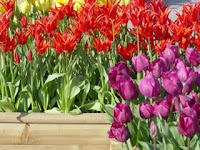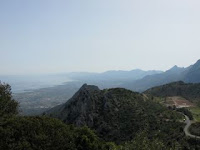When we contemplate the cities of the world, images form in our minds. Say “Paris” and we picture the Champs Élysées and the Eiffel Tower. Mention “Cairo” and we visualize the pyramids. “Rome” elicits ruins and “Venice” water. Then we visit these landmarks and our imagination comes to life. We snap pictures of landmarks, not unlike the pictures we had studied in books. We share them when we return but these projections of reality are flat. They do not capture the soul of a location which, for us, is in the people we meet. We have this same experience everywhere we travel, but in Turkey it was magnified. Almost every person we encountered was friendly, gracious, and accommodating:
–the guide who offered a hand to me whenever the trek up or down the rocks was beyond my reach
–the Istanbul native who took us to dinner at Taksim Square
–the travel agent who served us tea
–the woman with the beautiful smile who cooked breakfast at the cave house
–the imam, the only English-speaker on the bus, who pointed out our stop
–the professor whose enthusiasm about the topic I was researching nearly matched my own.
In Turkey we visited Istanbul, Kuşadasi, Antalya, Ephesus, Perge, Aspendos, and several small towns in Cappadocia. In Cyprus we spent most of our time in Girne (Kyrenia), Gazi Magusa (Famagusta) and Lefkosia (Nicosia). Following are just some of the highlights:

ISTANBUL
Our first stop was “Istanbul, not Constantinople.” For you younger readers, that is from a song first recorded by the Four Lads in 1953. It was supposedly spring there. Flowers bloomed in the parks and tended roadways were lined with pansies, primroses, daffodils and masses of tulips, the flower they introduced to Holland. I say “supposedly spring” because it was cold. I wore six layers: camisole, long-sleeved shirt, short-sleeved shirt, sweater, sweatshirt and windbreaker. My hands were like icicles, as we had not packed for winter weather.
Each morning began with a traditional Middle Eastern breakfast: hard-boiled egg, dried fruit, olives and cheese. The food was excellent but I wonder again, as I do almost everywhere we travel, why fruits and vegetables in other countries taste so much better than those at home. I found myself enjoying sweet carrots, juicy oranges and musky bananas, foods I eat sparingly at home.
We visited the Kapali Çarşi (pronounced “charshi”), the world’s largest covered bazaar, multiple times. I had expected something like the Khan el-Khalili in Egypt but it more closely resembled the shopping district in Bologna, with wide streets and covered archways, decorated with mosaics and fountains.

EPHESUS
Ephesus was a lesson in humility. At its grandeur, this large city was as sophisticated as any modern American city. Ancient visitors must have gawked with craned necks just as I did when I first visited New York City. Public buildings were massive constructions. Public toilets were plentiful. Storefronts were ornate. Street gutters carried away waste and running water was used for “air conditioning.” Walking the same street stones as the ancients, down the sloping avenue dominated by an imposing library, transported us backward and forward at the same time and it struck me that, aside from the development of the motor and the computer chip, we have not really progressed as far as we might believe.
CAPPADOCIA

For centuries people in the Cappadocia region of Turkey carved their homes out of the mountains and hillsides. There are few natural resources to build houses, and caves are fairly easy to hew out of the malleable stone, so people lived this way until just a few decades ago. Early Christian hermits chipped caves into the cone-shaped hills until, in the fourth century, Athanasius and others organized the recluses into monasteries, also carved out of the mountains. Whole basilicas sit inside the rock.
Entire cities were constructed underground. We have visited other underground villages, like those in Vietnam, but they were usually temporary. In Cappadocia passageways were chiseled between homes and even between cities, all underground. In spite of my claustrophobia, we descended eight stories under the earth to see some of the homes, complete with sanitation and ventilation. Although the invading hordes crossed this region repeatedly, on their way to one conquest or another, they were never able to conquer this part of the world “without castles.”
Even the hotels in this region are converted caves, but my claustrophobia won out here and I opted for a room above ground. When we arrived at the Antik Cave Hotel our host rushed downstairs to throw wood into the furnace so that our room and water would be warm. Our accommodations looked like a courtesan’s room in the Sultan’s palace: embroidered bed linens, purple curtains dividing the ro
om into two, niches for the lighting.
CYPRUS

After extensive research in libraries and on the internet, we can be tricked into believing that we have a comprehensive grasp of a topic when, in fact, we have only understood the surface. I had already drafted my novel and wanted to go to Cyprus “for the flavor,” before beginning the endless editing process. It is fortunate that I did. I could never have imagined the height of the mountains or how they create a bowl around the island. I could not have imagined the colors of the water or the intensity of the sun. And I would never have met Dr. Mehmet Hacişevki.
Dr. Hacişevki has trained many of the travel guides in Northern Cyprus and helped establish their tourism industry. He also teaches international relations, has studied in France and Germany, and holds a wealth of information in his head. Prior to our adventure touring historical Cyprus, he read David Hunt’s book on Caterina Cornaro so that he would know more about the woman who had captured my imagination. I worry that academics will not take me seriously when they learn I am writing a novel, but Dr. Hacişevki said, “Then you will need to learn the facts but also capture the romance.” He took us to the heights of St. Hilarion, guided us through the remains of the Lusignan palaces and walls, and even described the significance of the plants that grow in abundance around those walls. I feel blessed by his knowledge and generosity.
EASTER IN GIRNE, CYPRUS
We attended Easter Mass at the Holy Land Church, a small building that seats about 40 comfortably. The plaque on the outside wall says it’s a Hungarian church but there is no further explanation. On Easter about 60 of us gathered inside with 150 or more outside. A Franciscan priest celebrated the Mass, assisted by two African deacons. The accompanist was also African, playing on a portable keyboard that resonated in the small stone church like a small organ resonance. At Communion the Africans sang a native song. This was the only music that was tolerable. The cantor, singing in a falsetto voice, was tone-deaf. The priest did not know the music—but sang anyway. He sang the second line of “Jesus Christ is Risen Today” loudly, with the same notes as the first line—while the accompanist played the correct notes—unintended discordant polyphony. The Ordo was sung in Latin but few knew the melodies. Even I who studied the chant music extensively was at a loss. The hymns dragged mercilessly but, unlike most Catholics, after Mass was concluded, everyone stayed for all five verses of “Amazing Grace.”
REFLECTIONS

My most enduring image of Turkey is one we did not capture well on film. It is a metaphor for a country that was the capital of the Christian Byzantine Empire and is now 99% Muslim. In Hagia Sofia, as in many Christian churches that became mosques, Muslims covered over the Christian images. Although Muslims respect Jesus, his mother and the saints, they are prohibited from representing human figures. When Ataturk, the Father of modern Turkey ruled, he converted Hagia Sofia into a museum and uncovered some of the artwork. Now, over the apse, there is a mosaic of Mary holding Jesus. To the right is a large medallion with the Arabic for “Allah” and to the left a medallion that reads “Mohammed.” Professor Hacişevki, my historical mentor in Turkish Cyprus, said that I was “precisely correct” in choosing this image as symbolic of Turkey.
Traveling is magical. We see history come to life. We satisfy a longing that our reading and study has stirred in us. It opens our minds and hearts to the world. Most important, we learn that people are simply that: people. Children smile easily, push their friends, sing spontaneously. Mothers kiss their babies’ heads, swat their children’s bottoms, and hold them close. Merchants hustle (in both senses of the word), cajole, and exaggerate. Religious leaders walk with hauteur but reverence. We all smile, we all laugh, we all cry. We are all the same.
2010

